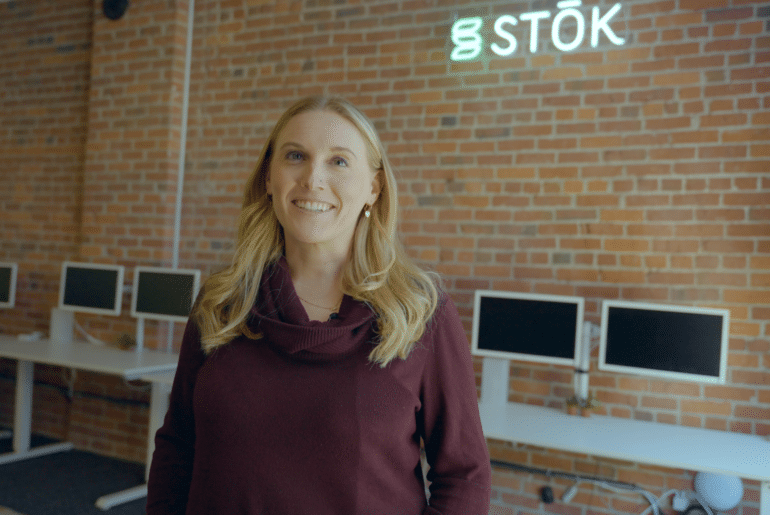With environmental, social, and governance (ESG) considerations and efforts on the rise for corporations, investors, and governments alike, Stok decided to discuss the rise of ESG with someone who’s dedicated their research to it.
Avis Devine is an Associate Professor of Real Estate with the Brookfield Centre in Real Estate and Infrastructure at Schulich School of Business, York University in Toronto. Her time is mostly spent researching the financial implications of sustainability in commercial real estate (CRE) and serving Schulich’s graduate programs in real estate and infrastructure.
In this Q&A, Dr. Devine shares ESG insights from her applied research outlining the financial case for sustainability investment by corporations, investors, and governments, as well as the recent rise of the social aspect of ESG.
YOUR RESEARCH CENTERS AROUND ECONOMIC RISK (BUSINESS AND FINANCIAL) AND HOW IT’S IMPACTED BY ENVIRONMENTAL SUSTAINABILITY. WHAT HAS YOUR RESEARCH SHOWN ABOUT ESG PROGRAMS?
Much of my work to date has explored the impact of third-party certification on the asset level. Findings suggest higher rents (as compared to uncertified and “self-certified” properties) and occupancy rates, greater probability of tenant re-leasing, lower tenant improvement allowances, and higher tenant satisfaction.
While most of this asset-level work explores office and multifamily space, I’ve studied retail space as well, finding evidence of business benefits to the tenants in certified buildings as well as confirming similar findings for REITs holding environmentally-certified retail space. My REITs work also identifies lower interest costs and higher market valuation of REITs with a “Green Share,” and confirms that the results we see at the asset level carry up to the REIT corporate level.
I’ve recently completed work expanding the scope of environmental sustainability in CRE from just green building certification to include other building interventions, such as tenant engagement, monitoring programs, and environmentally-focused capital expenditures. This study explores the impact of these interventions on electricity consumption both at implementation and over time, and finds that to maximize environmental benefits, we must consider both the technical interventions (such as certification and capital expenditures) and the behavioral aspects (such as tenant engagement and monitoring).
WHERE IS YOUR RESEARCH FOCUSED THESE DAYS AND WHAT DO YOU THINK IS THE MOST CRUCIAL RESEARCH THAT HAS YET TO BE DONE?
I’m currently focused on three studies. The first extends the green building certification in emerging markets conversation to understand the impact of corruption. The second examines a green bond program offered by Fannie Mae for multifamily mortgage-backed securities. The third, a study with the Global Real Estate Sustainability Benchmark (GRESB), is exploring the impact of where sustainability decision-making is situated within real estate firms’ organizational structure and reporting, and the impact on environmental sustainability adoption and related firm performance outcomes.
In the future I hope to dive into measuring the impact of the new and rising set of healthy building certification programs and exploring the question of asset resilience in the face of extreme climate events.
YOU HAVE A THEORY CALLED ‘RISE OF THE S.’ CAN YOU TELL US MORE?
When we talk about ‘sustainability’ we’ve generally meant environmental sustainability. But for something to be sustainable it must concurrently meet economic, environmental, and social needs. So, in the past our discussion of sustainability has addressed the economic and environmental needs, but social needs have largely been ignored. The reason for this relates to current limitations in the data and our understanding of the mechanisms that shape social sustainability.
However, in the same way climate crises advanced the discussion of environmental impact, I believe the COVID-19 pandemic is advancing the conversation around meeting social needs. This comes at a time when environmental sustainability thought leaders are comfortable with addressing their environmental goals, allowing their focus to pivot toward better understanding and addressing social needs.
WHAT’S THE MOST CRITICAL TOPIC UNDER THE ESG UMBRELLA RIGHT NOW FOR CORPORATIONS, INVESTORS, AND GOVERNMENTS?
I’d broaden this question to address both what is most critical, and most topical. Regarding the latter, I’d say the ESG-related questions on everyone’s minds right now are COVID-infused. This has created a notable pivot in focus from environmental toward social as we consider the implications of both the pandemic and the resulting lockdowns. Organizations are focused on the implications on physical and mental health as well as productivity and innovation. As my ‘rise of the S’ theory describes, a possible silver lining of this pandemic could be major strides forward in addressing the social aspect of ESG.
On the topic of “most critical,” for corporations and investors I believe that topic will be unique by firm. Depending on what type of work or product they specialize in, each will have their own area for greatest impact or improvement. The key is to make addressing this question and implementing the answer a priority.
For governments, the most critical task is effective execution of the ESG-related policies they deem important. There are structural reasons it can be difficult for governments to follow through on their goals, yet those reasons make focusing on effective execution even more important. Governments have a tremendous ability to shape the private sector through encouragement, incentive and requisite policies, and spillover effects, but policy execution is key in maximizing those benefits.
As a sidenote, I’d like to stress the importance of evaluating geographic markets and industries on their own adoption curves. We cannot compare gateway cities to second tier cities (or developing countries), and we cannot compare office REITs to custom home builders. But we can and should compare them to their yesterday and tomorrow performance, and evaluate them against their peers.
WHAT RISKS FOR INVESTORS WOULD YOU SAY ARE THE MOST PRESSING BOTH IN THE 3-7 YEAR TIMEFRAME AND THE 8-15 YEAR TIMEFRAME?
For 3-7 years, I think the question is how to come out of the pandemic period as viable as possible while not straying from long-term ESG goals and strategy. This isn’t a time to ignore ESG work, and it could even prove to be a good time to lean into it more or pause for recalibration based on the extreme amount of new information the pandemic is providing us.
Looking further out, the focus should shift from just sustainability to include resilience, particularly climate resilience. In real estate, we deal in very long-lived assets, and our risk analysis needs to be just as long-lived whenever possible. That could mean seriously thinking about sea levels, climate intensity, population densities, and emerging economies when considering where to build, buy, or sell.
WHAT DO YOU SAY TO SOMEONE WHO DOESN’T BELIEVE IN CLIMATE’S IMPACTS ON REAL ESTATE ASSETS AND VALUES?
U.S. buildings are associated with approximately 40% of energy consumption and greenhouse gas emissions, and upwards of 75% of electricity consumption occurs within buildings. This both captures real estate’s impact on the environment and shows clear paths available for efficiencies that can shape cash flow and, therefore, value. Bonus point: when we consider the impact of real estate on people, (during non-pandemic times) we spend approximately 90% of our lives indoors.
YOUR RESEARCH HAS HAD MAJOR IMPACT IN THE ESG WORLD. HOW DID YOU GET THERE?
My interest in environmental impact has always been there. My earliest memory of it was having to make a mini-golf course hole in art class in elementary school, and I chose to theme it on the recycle triangle symbol. It was the 80s, so that was still a new symbol, and I remember having to explain it to adult after adult that visited my part of the course. I was so surprised that none of these responsible grown-ups knew about recycling, and I guess the need to spread the word stuck with me.
Connect with Dr. Devine on LinkedIn to help keep spreading the word and reach out to the Stok team to discuss the financial case for ESG investments in more depth. For further reading on the rise of the S in ESG investing, check out this Goldman Sachs video and this Harvard Law School post.
Photo courtesy of Schulich School of Business.



